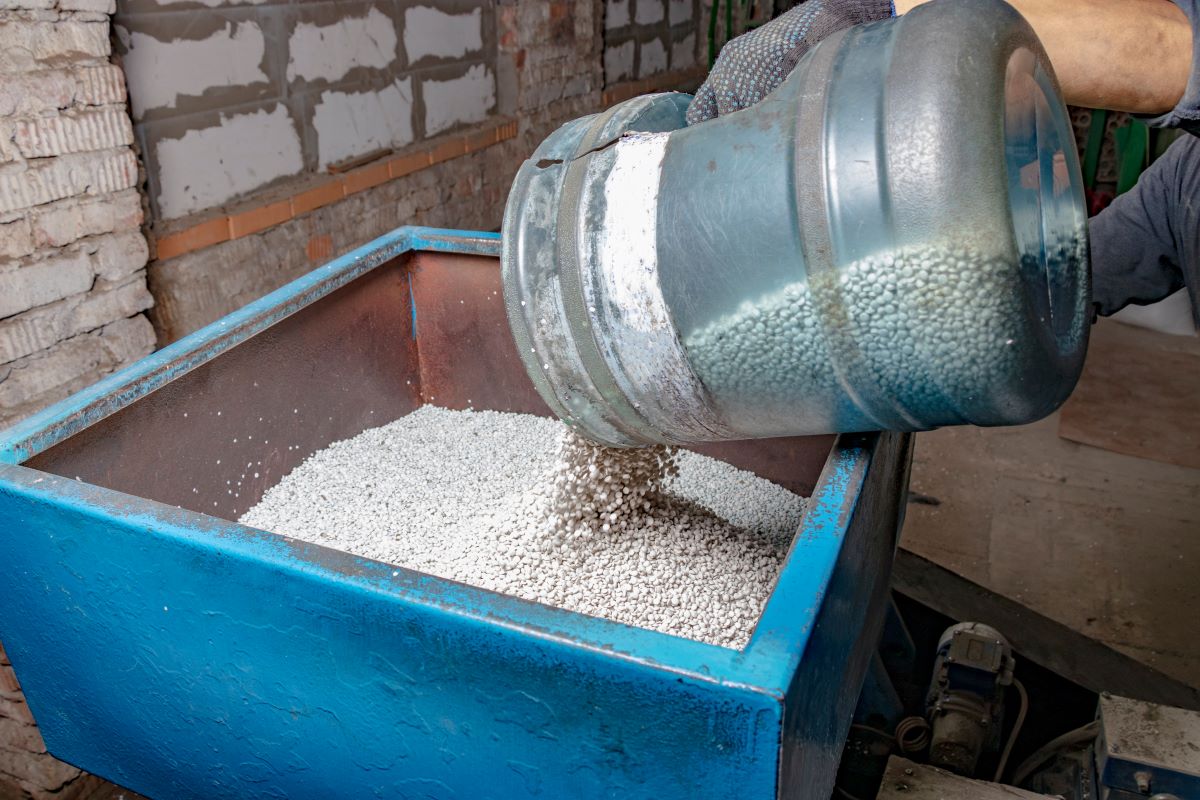
According to a recent report from the Argonne National Laboratory, LDPE and HDPE made with 5% pyrolysis oil emit a lower volume of greenhouse gases than their virgin counterparts. | Vikentiy Elizarov/Shutterstock
A life cycle analysis from the U.S. Department of Energy’s Argonne National Laboratory suggested that chemically recycling plastics entails lower greenhouse gas emissions than virgin production.
The study, supported by the American Chemistry Council, analyzed data collected from 2017 to 2021 from eight U.S. facilities that use pyrolysis to process LDPE and HDPE at some level.
The terms “chemical recycling” and “advanced recycling” generally refer to a wide array of processes that use heat, pressure and solvents to break down the molecular chains of polymers into liquids or gasses that can then be processed into fuels, oils, waxes, new plastics or other chemical products.
According to the report, there’s an 18% decrease in greenhouse gas emissions when making LDPE with 5% pyrolysis oil compared to virgin oil-derived plastics. For HDPE, that decrease is 23%.
“When factoring in current end-of-life practices for many plastics in the U.S., such as incineration, there is a further 40% to 50% reduction in GHG emissions when manufacturing pyrolysis-based LDPE and HDPE,” the report noted.
Potential reductions are much higher in the European Union – up to 131% – because there is more incineration, the report stated.
The study noted that the data for pyrolysis oil production came from industry operations, but were also based on standard operations available in literature and “discussions with the industry partners because this information is considered sensitive and proprietary.”
Pahola Thathiana Benavides, Argonne principal energy systems analyst and study author, said in a press release that chemical recycling “is poised to play a major role in achieving global sustainability goals by reducing waste and GHG emissions.”
“It can transform hard-to-recycle plastics into a multitude of high-value raw materials, reducing the need for fossil resources and potentially minimizing the environmental impact of waste management,” Thathiana Benavides added.
The report noted that fully taking advantage of the technology’s potential “will require larger infrastructure for collection, transportation, sorting and pyrolysis conversion, improvements in sortation yields and agreements between different stakeholders in the plastic recycling and manufacturing supply chain.”